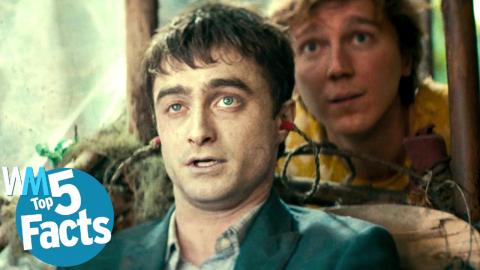Top 5 Facts About Body Decomposition

It might smell rotten, but it's a natural part of life... kind of. Welcome to WatchMojo's Top 5 Facts. In today's instalment we're counting down the Top 5 Facts About Body Decomposition. Come along as we take an honest look at what happens to our earthly form after we die.
#5: It Starts Soon After Death
Meat might last a good couple days in the fridge, but left to its own devices, a fresh human body starts the process of breaking down shortly after death. You’re not going to start visibly rotting on the spot, but internally, a mere minutes after that heart stops beating, a new post-mortem bodily process called “autolysis” kicks into gear. Also known as autodigestion, this is the first phase of decomposition. What happens is that each of the cells that make up your body release enzymes, which begin to break them down from the inside out. As far as your body is concerned… that’s the beginning the end.
#4: The Decay is Broken Down into a Series of Disgusting Stages
Honestly, autolysis seems tame compared to what comes next. Depending on the environment, the initial stages of putrefaction typically begin within two to three days. The proteins that make up your corporeal self begin to break down as bacteria goes to work on the body. The stomach swells with gasses and the skin changes color and blisters. Around day 10, a phase called “black putrefaction” begins, at which point stink becomes a major factor. The skin turns black, and the bloating subsides as liquefied body parts begin to leak out. Around day 20, the decomposition process takes a turn for the drier, and the smell becomes more ... cheese-like.
#3: Embalming Can Slow Decay, but it Can't Stop it
If you’ve ever been to an open casket funeral, then you’ve seen firsthand the end result of the techniques that have been developed for delaying signs of decomposition. Humans have been preserving the dead for ages, dating all the way back to 5000 or 6000 BC. Most techniques involve dehydrating the body and removing the organs from it, as well as protecting the skin with various external preparations – for example, mummification. Each step helps to slow the rate of decomposition, but even modern embalming techniques can’t halt the process entirely. Short of donating your body to the Institute for Plastination, decay is inevitable.
#2: Environment Plays a Big Role
If you’re concerned about extending your body’s life after death, but wish to respect traditional customs, you can take comfort in the fact that simply burying your body underground in a coffin significantly slows decomposition. Autolysis is an internal process, but most of the forces depend on external factors. The speed and manner in which you decompose depends on environment. In a dry, arid climate, your body will naturally mummify to a certain degree. A body will be similarly preserved in extremely cold climates. In hot humid environments however, putrefaction is going to be extra quick and liquidy. Of course, insects and scavengers also play a key role in any environment.
#1: That Healthy Gut Flora We've Been Cultivating Goes Wild
If you’re health conscious, chances are you put a fair amount of effort into cultivating healthy bacteria in your digestive system. And hey, according to contemporary research, gut flora looks to be a crucial player in keeping you healthy in a wide variety of ways. But we’re not here to talk about your health… we’re interested in what that gut bacteria does once your health has becomes a moot point. And apparently, no longer contained to the digestive system, these microorganisms turn on the host they once served, travelling all over the body to feast and kickstart decomposition. It isn't a pleasant thought, but after death, your body becomes a veritable ecosystem, taking on a life of its own.
